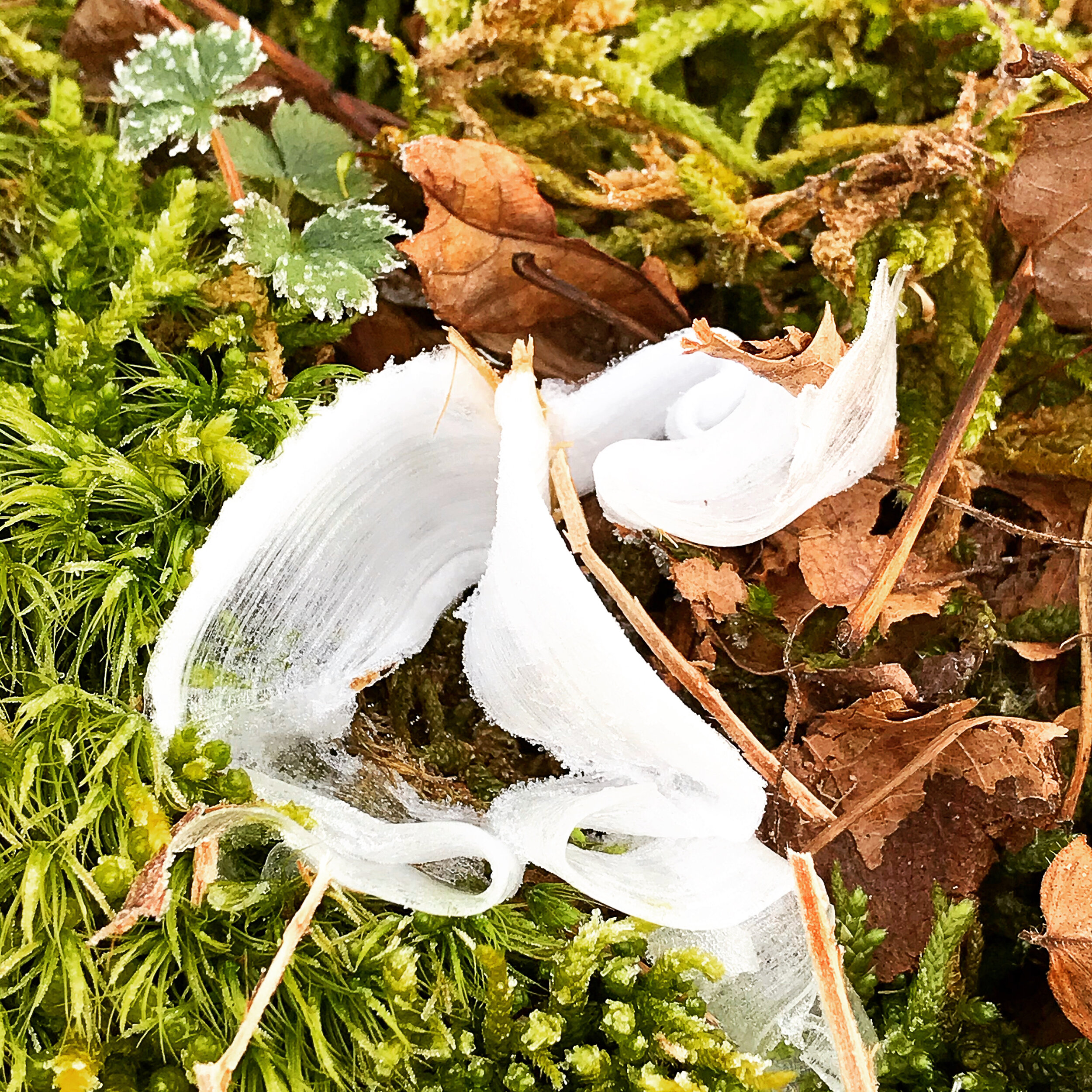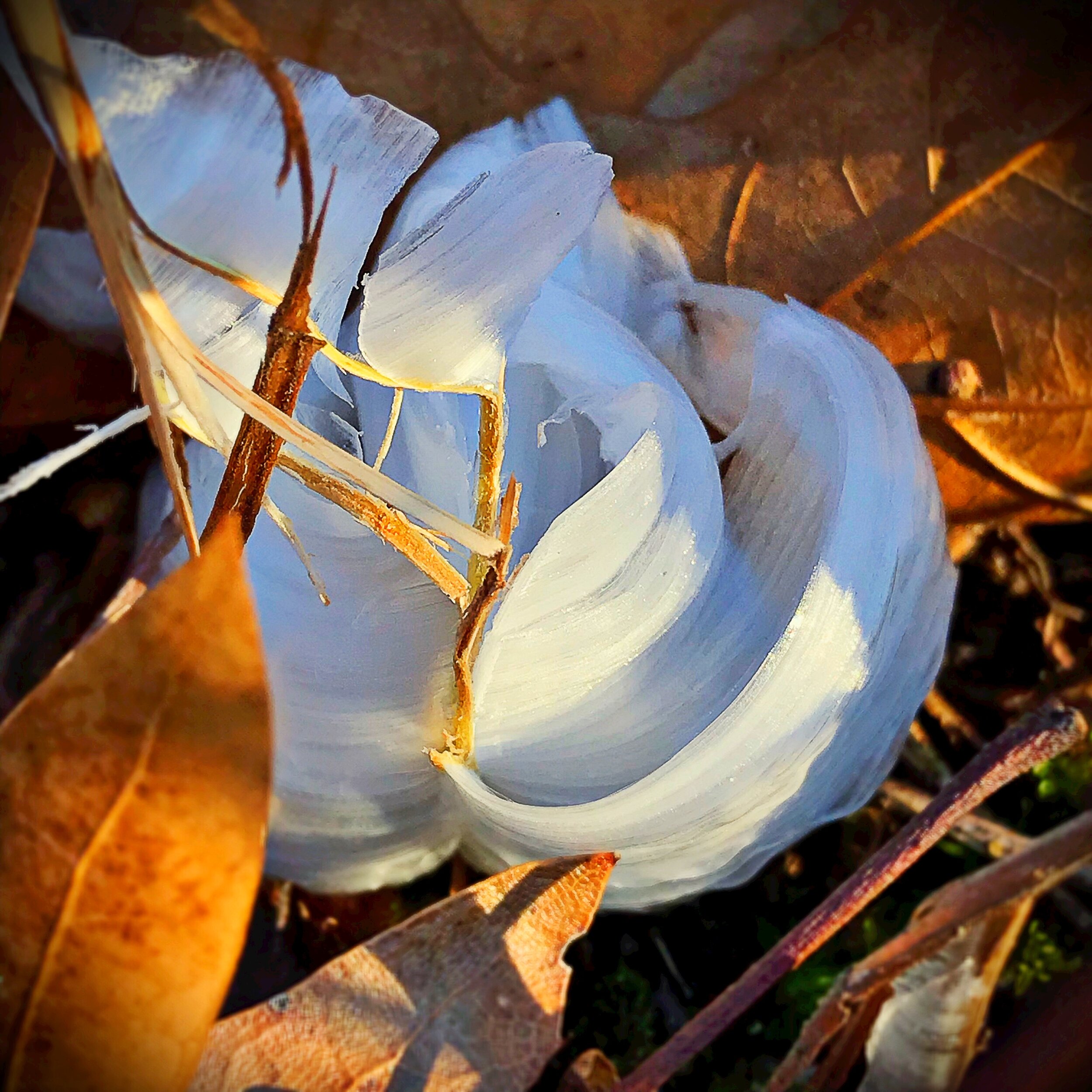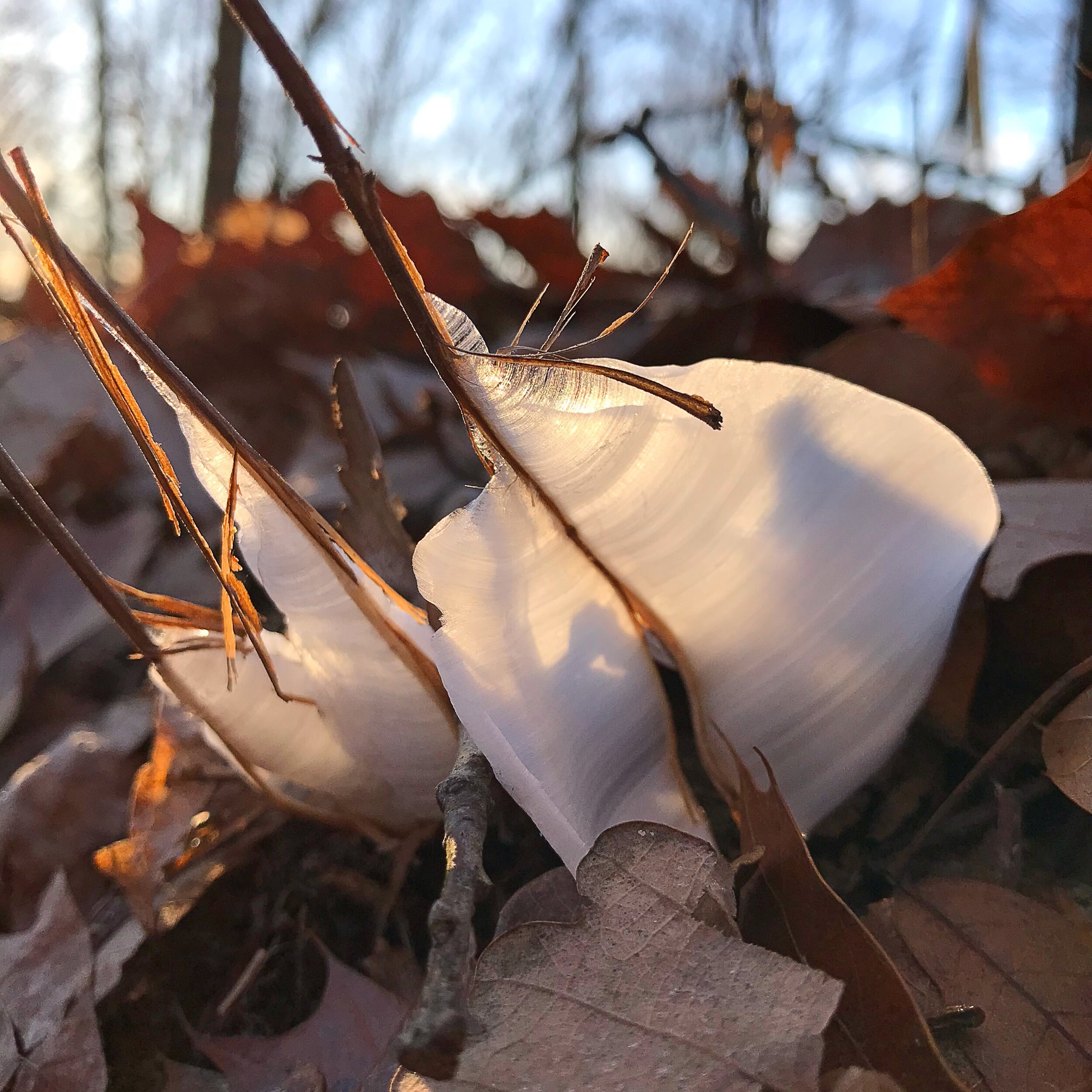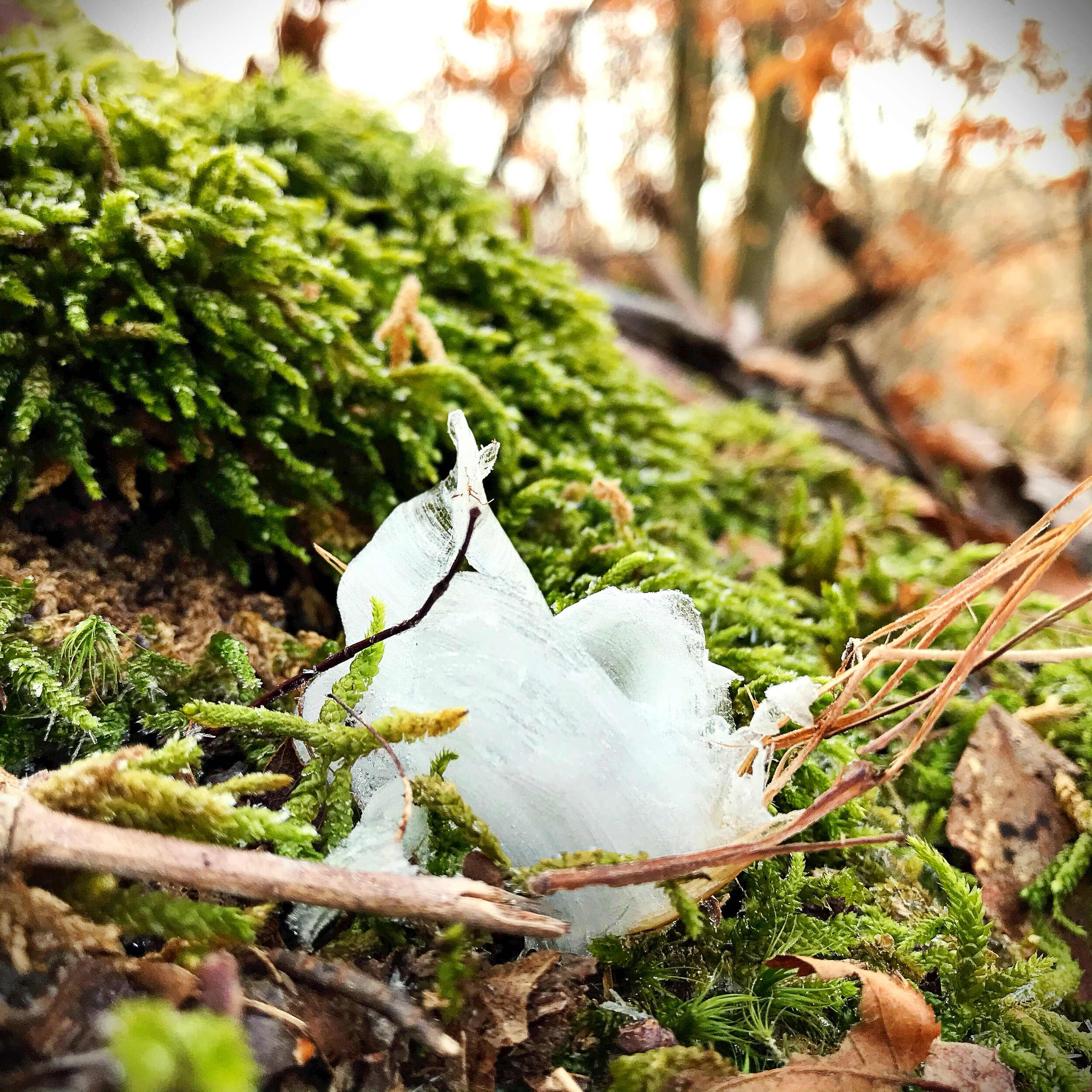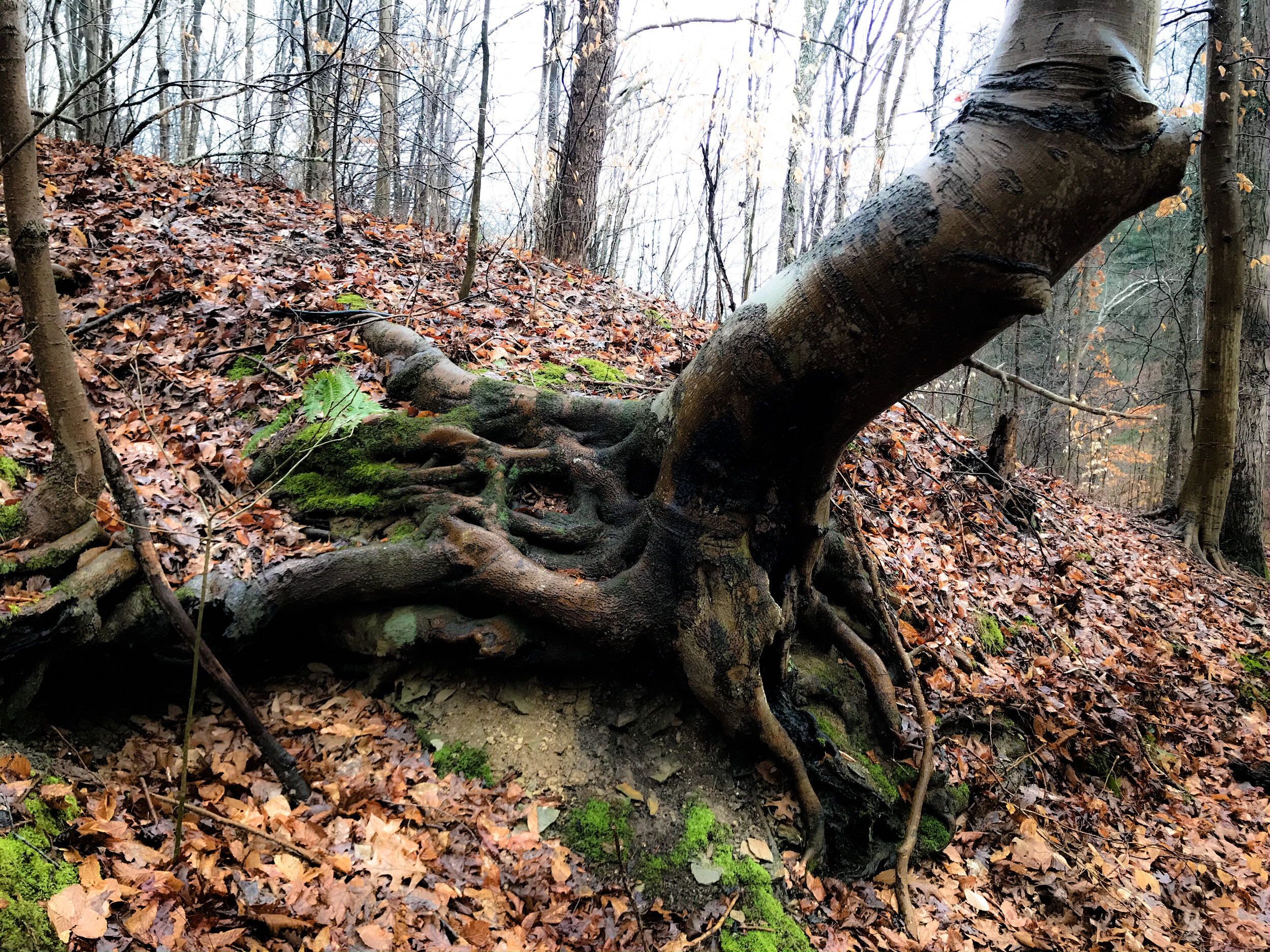The Fairer Folk
Over time, tales change. Perhaps that is simply the nature of human story; their meaning either evolves or decays alongside their cultural relevance. Nonetheless, stories of the fair folk (also known as the sìth or sìdh and pronounced ‘shee’) from Celtic brethren of both past and present continue to inspire. There are many tales, buried beneath the rubble of distrust for such imaginings, reminding us that once upon a time, the mystical and the rational lived side by side in perfect inclusivity.
Illustration by Alan Lee in Fairies
One such story, as told by Osgood Mackenzie in A Hundred Years in the Highlands, is of the Ghillie Dhu, or Gillie Dubh, a Scottish fae of more modern times (early 19th century) who inhabited the woods near Gairloch of Wester Ross in the northwest Highlands (tis’ a beautiful part of the country to visit by the way). Clothed in Birch bark, leaves, and moss, the Ghillie Dhu was regarded as a benevolent soul, as opposed to many other of the fair folk who by this time in history were considered the cause of all ills, thefts, and debacles.[i]
One night, after getting lost in the woods, a human child by the name of Jessie Macrae was given shelter by the Ghillie Dhu and returned safely home the following day. The story continues to several decades later, after Jessie Macrae had married, when Sir Hector Mackenzie of Gairloch and his band of fellow lairds decided to hunt the Ghillie Dhu for the killing (it is not entirely clear why), but never found him.[ii] Ironically, many now claim the Ghillie Dhu as the namesake of the Ghillie suit, a costume of war and hunting designed to disguise the wearer from its enemies or targets.
They say, after that infamous day, that the Ghillie Dhu was never spotted again. Alas, to be hunted is to hide. Perhaps, however, there exists another truth to this tale whereby what is kindly and magic (like the workings of the fair folk or even the fair folk themselves), can only be seen by those who walk the woods and wild places simply to feel and to be…by those who are not hunting for it. Afterall, many still believe that the sìth are the ‘people of peace’.[iii] To experience their enchanting work in this world requires a softer approach, one less fixed on answers or outcomes.
A Human’s Approach…
Meandering through an almost naked, wintery woods, one is easily reminded about the benefits of treading lightly as to not offend the fairer folk. It is a delicate time of year, the freeze-thaw cycle of the soil makes for easy slipping, and falling, and crushing of sleeping ecosystems.
The air feels as sharp in the lungs as the needle ice underfoot. The sun has just fully risen for the day and cardinals, jays, and finches, all puffed-up with bravery against the winter’s chill, have begun to sing their morning hymns. They flee in ribbons of color from low hanging branches as the sound of crunching footsteps upon frozen soil alert the forest of a human’s approach.
To the common eye, not much remains to be seen during the Appalachian Ohio woodland slumber beyond occasional flashes of dark green American Holly, Spotted Wintergreen, or Christmas Fern. However, beyond the dreich shades of brown and grey, nestled in amongst the buttresses of large White Oak, Chestnut Oak, and American Beech, are expansive patches of lime-green mosses illuminating the forest floor. To a weary soul on a weary morning, these small hummocks are the sìthean or sìdhean (pronounced shee-an), the fairy hills of this holler. Their radiance is a reminder of the compassion of the Ghillie Dhu, as if he didn’t actually disappear, but rather traveled to Appalachia along with the refugees of the Highland Clearances who settled in these parts.
He has decorated the forest floor with comfortable places to rest or hide; Perhaps moss grows anywhere he touches the ground so that he will always have ample outfits to choose from. Maybe the Ghillie Dhu is no longer alone; maybe he has found many friends and fellows in these woods and each night they have a wild cèilidh, throwing their clothes about and dancing naked in amity beneath the moonlight.
Moss-covered sìthean amongst Chestnut Oak, White Oak, Red Maple, and American Beech (photo: Erika Galentin)
Back on the path…
One of the most wonderous things about a path through a forest (beyond the adventure it invites) are its edges. As above, so below, inasmuch as there is often just enough light to provide the energy and encouragement for species of plants and herbs that have difficulty under heavy canopy cover. Known as the ‘edge effect’, characters such as Spotted St. John’s Wort (Hypericum punctatum), Blue-stemmed Goldenrod (Solidago caesia), and Stone Crop (Sedum turnatum), find these liminal spaces within this forest ecosystem rather homely.
Someone has left their hat….
…and their walking sticks. (Photos: Erika Galentin)
Another fascinating species that likes to live on the edge, and the subject of today’s enchantment, is the American Dittany. Historically, the plant was classified as either Mappia origanoides or Cunila mariana, with folks finally settling on a combination of the two resulting in its modern Latin binomial, Cunila origanoides (L.) Britt. Over the years the species has also enjoyed several other names including Maryland Dittany, Stone Mint, Wild Oregano, or for those who still believe…’Fairy Skirts’ (although thoroughly explained later on in today’s tale, now is the moment to note that the latter will forever remain the species proper name).
Meeting American Dittany
American Dittany (or more properly Fairy Skirts), is a hardy perennial member of the Mint family (Lamiaceae). Native to much of eastern North America, the species typically enjoys dry, rocky, or open woods, clearings, and slopes. Like all good members of the Mint family, the species has 4-angled (square) stems, opposite leaves, and bilaterally symmetrical flowers.
In the early spring, stout shoots develop from a solitary base whose leaves radiate the most delightful shades of deep green and purple-merlot. The stems are also a shade of burgundy wine at this stage, but as the season progresses and the plant grows in stature, the stems turn brown and woody and in so doing become very brittle (the heavy-handed will often find they have accidently broken them off).
Spring shoots of Cunila origanoides. Note the 4-angled stems and opposite leaves. (Photo: Erika Galentin)
In regards to the flowers, to be bilaterally symmetrical (a.k.a. zygomorphic) means that there is only one axis of symmetry as opposed to many. This axis usually runs down the middle of the flower whereby you could fold it up on itself and the two sides would match. The shape of the American Dittany flower, as well as all species in the mint family, used to be described as ‘labiate’. The term is also the source of the Mint family’s previous name ‘Labiatae’. But, somewhere along the line botanists got rather shy and decided to no longer refer to the appearance of flowers in reference to female genitalia (according to one version of the story anyway).
Regardless, the blooms of American Dittany are rather delightful displays of soft pink and lavender. Compact cymes of flowers terminate the upper stems and also occur from the axils of the middle to upper leaves (the axil, being where the leaf meets the stem, is sometimes also referred to as the ‘armpit’ by those still committed to anthropomorphism). Each single flower is relatively small, only 1/4" to 1/3" in length, and consisting of a tubular corolla with 4 spreading lobes, 2 strongly exserted stamens, and a 4-parted ovary with a strongly exserted style (the mint family just loves its multiples of 2’s and 4’s).
The sessile (stalkless) leaves grow opposite each other up along the stem and individually take on an almost perfect teardrop shape. Upon much closer inspection of the leaves, tiny little serrations on the margins appear, as do fine hairs along the major veins and small essential oil-producing glands on the surface. Indeed, rubbing the leaves between the fingers releases the most intoxicatingly curious yet potent aroma...
Flowers of Cunila origanoides with exserted styles and stamens. Note the rough, textured appearance of the leaf surface (oil glands) and tiny serrations on the margins. (Photo: Erika Galentin)
To breathe is to perceive…
Aroma. A product of our olfactory perception that is delivered straight to the area of our brain responsible for processing memory and emotion. According to the physiology of sensing a scent, what this means is that even before we are able to consciously identify what we are smelling, we are already having an emotional response and recalling or recording a memory to match it.[iv]
Crushing a leaf of American Dittany between one’s fingers and gently inhaling its aroma, sparks sensations of warmth or heat in the nose and sinuses. For those who feel the need to identify in order to ‘know’, the fragrance of American Dittany is akin to fresh culinary Oregano (hence one of its common names, Wild Oregano). However, it is a sharper, more cutting aroma than the culinary species exudes. As if the plant, living in the wilds, has produced such extravagant defense mechanisms that no other species, fairy or otherwise, would even dare consume it.
However, describing the aroma as ‘hot’, ‘sharp’, and ‘cutting’ sounds much more aggressive than the experience of the aroma feels. The feeling produced is one of comfort and familiarity, of centuries-old medicinal relationships between plants and people. Yes, it is very much a ‘medicinal’ fragrance, one that an herbalist walking through a native ecosystem would immediately recognize as anti-infective, diffusive, stimulating.
Equally so…upon inhaling the aroma of American Dittany deeply into one’s imagination, warming images of crackling bonfires, fiddles, ale, and dancing upon moss-covered fairy hills, invigorate the mind’s eye. Yes, there is also magic in this medicine…
Smoke from last night’s bonfires is still rising. (Photo: Erika Galentin)
A medicine of Fire…
Although seemingly not in common use amongst modern mainstream herbalists, American Dittany does have a rather potent medicinal history. Not surprisingly, what is detailed in historical colonial medical texts is not far off from what is found in the very slight ethnographic account of the species[v]. However, before diving into such details, something important needs to be stated:
When researching indigenous uses of medicinal plants, one must be careful with their interpretation of the ethnographic record. Traditionally, ethnography was field of recording cultural identity and indigenous knowledge restricted to only the privileged members of academic society. Often times, even with their best intentions, ethnographers’ approach to recording said indigenous knowledge came from a colonial and extractive mentality.[vi],[vii],[viii] There was likely too much lost in this exchange, including that which remained unshared or muddled up in translation. Furthermore, much of the colonial use of medicinal plants native to North America was undoubtedly initially appropriated from indigenous knowledge. This is also important to keep in mind when sorting through historical publications of the many beloved medical botanists and botanic physicians of the colonial era such as Constantine Samuel Rafinesque, William Barton, Samuel Thomson, or William Cook, to name a few.
What remains easily accessible in the ethnographic record describes the Cherokee use of American Dittany for a variety of healing purposes. An infusion, or strong tea, was made from the leaves and administered for headaches (‘of which kind?’ an herbalist might ask), as well as for fever and to encourage perspiration during a cold. This ethnography also notes a strong infusion of the species being used to support uterine contractions and facilitate childbirth. Lastly, words such as ‘tonic’ and ‘stimulant’ appear, which are reflected in the historical record of the medicinal uses of the species among colonial physicians.
Illustration by William P.C. Barton (1828). Vegetable materia medica of the United States, or, Medical botany. Vol. 2 Plate 42. As found in the Biodiversity Heritage Library.
Colonial physicians of the late 18th and early 19th century (specifically those that turned away from the common medical practices of bloodletting, heavy metal use, and narcotics), relied heavily upon indigenous knowledge of the medicinal virtues of plants in the ‘new’ world.[ix] Over time, and having spent over 100 years working directly with these species within a Western medical context, botanical physicians of the Eclectic and Physiomedical traditions expanded upon and prolifically wrote about their acquired empirical knowledge. In so doing, these botanical doctors left behind a rich and well-documented tradition for our modern times to explore. They also loved to plagiarize and copy each other’s work, claiming it as their own. As such, there is quite a lot of repetition.[x]
In regards to American Dittany specifically, a more thorough account comes from The Physiomedical Dispensatory, originally published in 1869, where physician and author William Cook describes the medicinal use of the species as follows:
“The whole plant, and especially the leaves, are diffusively stimulating and relaxing–being among the more pungent and pleasant of the aromatics. They secure a prompt action on the surface, arousing the capillaries and inducing moderate perspiration. For this influence they are valuable in recent colds, in tardy measles and other exanthems, and in the incipient stages of bilious and typhoid fever. They are rarely used alone; but are added to such articles as asclepias, eupatorium, and other relaxants of the diaphoretic class. By sustaining the capillaries, and probably the nervous peripheries also, they relieve some hysterical forms of nervous irritability; advance the menstrual flow, when it has recently been checked by exposure; and often are followed by increased micturation. They relieve flatulence; and make a useful adjuvant to such antispasmodics as cypripedium and scutellaria, and to such carminatives as dioscorea. They are so very diffusive as to be most valued in connection with more permanent agents; but their promptness and very agreeable stimulation entitle them to much wider use than is generally given them.”[xi]
While this lovely account may seem unintelligible to some, it is wildly delighting to an herbalist who uses similar species for similar effects including opening up the circulation and pushing heat to the surface to support the fever-perspire response to infection. Having a mild nervine effect, which generally refers to a reduction of irritability in the nervous system (including where there is spasm and restriction), is also a spectacular feature of this medicinal species.
But as an herbalist, nothing is more educational than interacting with American Dittany directly. Taking a nibble of the leaves one immediately feels these ‘diffusive’ effects; a heating, tingling sensation in the mouth quickly turns to a warming of the sinuses and a clearing of the head (much like what is experienced with its aroma). Several leaves taken and infused in hot water for an extended period of time, produces a centrally warming sensation whereby the consumer can feel a rise in body temperature and subsequent perspiration. It is also delightfully stimulating to the appetite and the digestion, kindling the digestive fire and producing immediate activity within the gastrointestinal tract (for example, leading to burping or farting if so needed). This is, for certain, a medicine of Fire.
But before we get over excited here, it must be acknowledged that this species is not one of abundance like other species of similar use such as Rosemary (Rosmarinus officinalis), Common Oregano (Origanum vulgare), or Thyme (Thymus officinalis). In fact, harvesting American Dittany from the wild should likely be restricted to apocalyptic scenarios only, as mainstream harvesting would certainly have a very negative impact on an already sparse existence. However, luckily the species takes very well to a domestic lifestyle and if one is so inclined to grow American Dittany in their gardens it can be easily found in the horticultural trade (like here).
In fact, the faeries will no doubt thank you for it…
Frost flowers or Fairy skirts?
Last season’s stems of Cunila origanoides. (Photo: Erika Galentin)
Now that we are so thoroughly acquainted with American Dittany, it is safe to say that one of the most common places to see it along this path through these woods is growing right out of these moss-covered hummocks. During this wintery time of year, as their roots lay sleeping beneath the surface of the cold earth, there isn’t much left of them above ground to see, or taste, or smell - bar the remaining broken-off woody stems that haven’t yet blown away into oblivion.
However, occasionally on cold mornings of late autumn and early winter (and even during an unusually warm winter such as this one), something magical happens. Of course, the rational scientific minds of our modern era seek to explain the phenomenon quite differently that those of us who are more mystically-minded.
Frost flowers; curious occurrences only happen with specific herbaceous plants which, during the first hard freezes of late autumn to early winter, are still transporting fluids up their xylem. The perfect conditions and combination of events must happen simultaneously for frost flowers to be formed. Firstly, the roots of American Dittany must still be drawing up water from the soil. In other words, the species must not yet be dormant for the season. Secondly, the ground must still be warmer than the surrounding air. As the air temperatures dip below freezing, the sucked-up water in the stem freezes and expands, causing the stem to rupture and exude the most glorious ribbons of ice. What a serendipitous, miraculous turn of events. The right place, the right time.
‘Frost Flowers’. Although it is quite a lovely sentiment, flowers made of frost, there is something rather lacking in such a description. They are fantastical displays of bright, glorious, sparkling light; creations of a magical and mystical creature that keeps itself hidden, like the Ghillie Dhu, from the hunting of human eyes. Hence, the species proper common name, ‘Fairy Skirts’. These are otherworldly manifestations…icy fabric whimsically thrown about on the moss-covered sìthean where the fair folk like to gather and dance under the protection of starlight.
These days, there are many who choose not to believe. To them, there are no such things as fairy skirts, only frost flowers. However, to be overtly focused on witnessing first-hand accounts of all which we pass by in wild places means to also be so caught up in the capture of ‘facts’ that we forget how to feel and how to be…and the truth, like the fair folk themselves, will for some forever remain hidden from the hunt.
Home of the Ghillie Dhu in the roots of American Beech. (Photo: Erika Galentin)
References
[i] Henderson, L. & Cowan, E.J. 2001. Scottish Fairy Belief: A History. Glasgow, U.K.: Tuckwell Press, Ltd.
[ii] Mackenzie, O. 1921. A Hundred Years in the Highlands. London, U.K.: Edward Arnold. Available online: https://archive.org/details/hundredyearsinhi00mack/page/n8/mode/2up
[iii] Campbell, J.G. 1900. Superstitions of the Highlands & Islands of Scotland. Glasgow, U.K.: James MacLehose and Sons. Available online: https://archive.org/details/superstitionshi00campgoog/page/n6/mode/2up
[iv] Paolo, P. 2016. On the Scent: A Journey through the Science of Smell. Oxford, U.K.: Oxford University Press.
[v] Hamel, P. B. & Mary U. Chiltoskey, M.U. 1975. Cherokee Plants and Their Uses -- A 400 Year History. Sylva, NC: Herald Publishing Co.
[vi] Lester, A. 2015. Settler colonialism, George Grey and the politics of ethnography. Society and Space, 34(3), 492-507. https://doi.org/10.1177/0263775815618402
[vii] Steinmetz, G. 2004. The uncontrollable afterlives of ethnography: Lesson from ‘salvage colonialism’ in the German overseas empire. Ethnography, 5(3), 251-288. https://doi.org/10.1177/1466138104045657
[viii] Marcus, G. 2008. The end(s) of ethnography: Social/cultural anthropology’s signature form of producing knowledge in transition. Cultural Anthropology, 23(1), 1-14. https://doi.org/10.1111/j.1548-1360.2008.00001.x
[ix] Flannery, M.A. & Worthen, D.B. 2001. America’s Botanico-Medical Movements: Vox Populi. Boca Raton, FL.: CRC Press.
[x] Ibid.
[xi] See: https://www.henriettes-herb.com/eclectic/cook/CUNILA_MARIANA.htm











